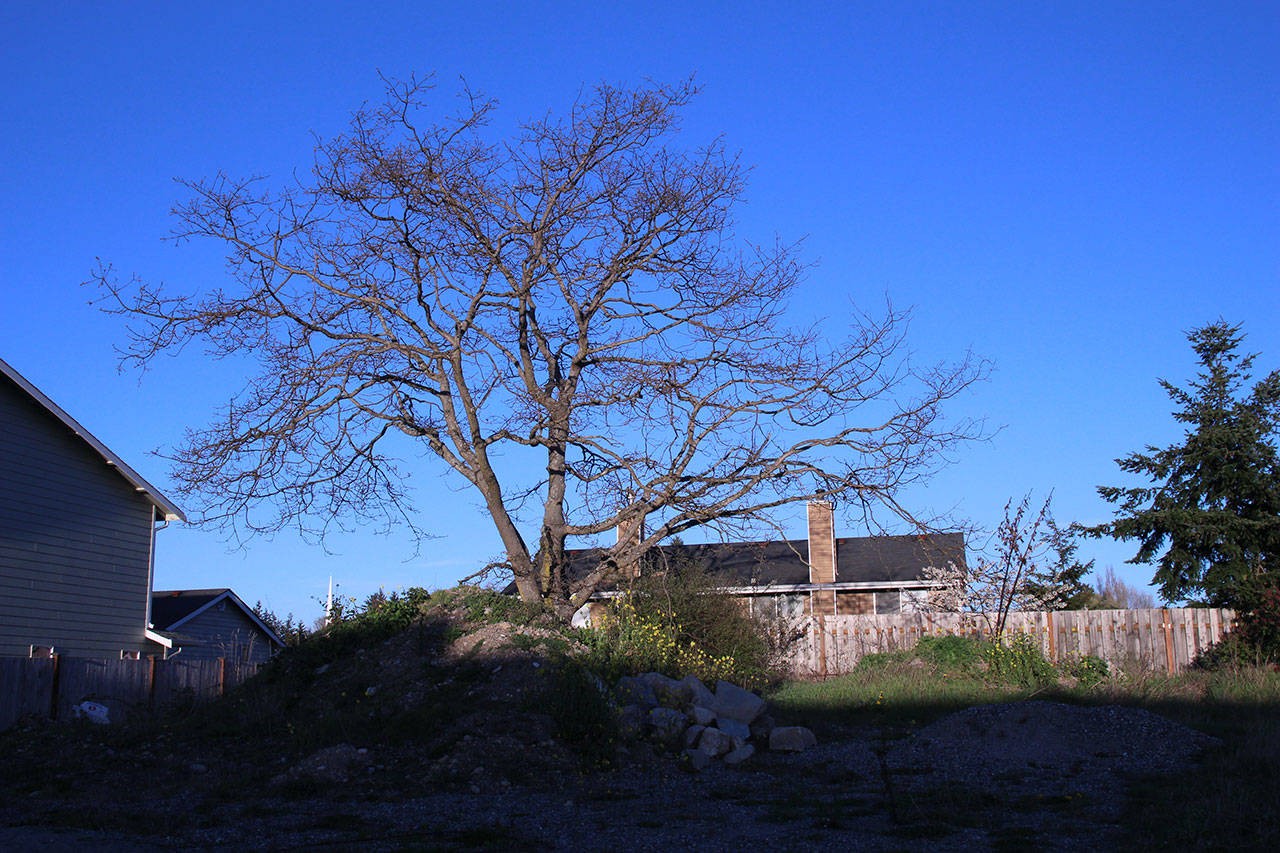Planners proposed a list of changes to Oak Harbor’s Garry oak protection ordinance based on input from a group dedicated to preserving the trees.
The ideas include a list of 10 measures to protect the city’s namesake tree if construction will occur near one.
In addition, the code prohibits the owners of oak trees from allowing ivy or any other invasive vine from taking over a tree.
Laura Renninger, president of the Oak Harbor Garry Oak Society, and Kyle Renninger, a member of the board of directors, were at a city council workshop last Wednesday at which Development Director Steve Powers briefed the council on the proposed changes.
Laura Renninger said they were pleased with the proposals, which she said were based on an ordinance from Oak Bay, British Columbia; the society had urged city planners to consider the ordinance.
She said she was especially thrilled that the ban on vines was added to the proposed ordinance. She said they can wrap around an oak and kill it over time.
“The frosting on the cake is the piece about the ivy,” she said.
Powers said the city’s ordinance previously talked about protecting oaks in terms of a drip line, which is the outermost circumference of a tree’s canopy; the city’s ordinance, for example, doesn’t allow hard surfaces within a Garry oak’s drip line.
A more advanced way to look at tree protection, Powers said, is in terms of a “critical root zone,” or CRZ, which is a circular area around the tree trunk that is one foot in radius for every inch of the trunk’s diameter.
Powers explained that the proposed ordinance changes include “a safety valve” provision in case the protective measures cannot be met for some reason.
In that case, the applicant would be required to provide a tree protection plan prepared by a certified arborist.
Some of the protective measures include a restriction on cutting roots greater than four inches; a requirement for a strong fence; the need for signs to help convey the importance of the CRZ to workers; and a ban on disturbing or altering the soil composition within the CRZ.



